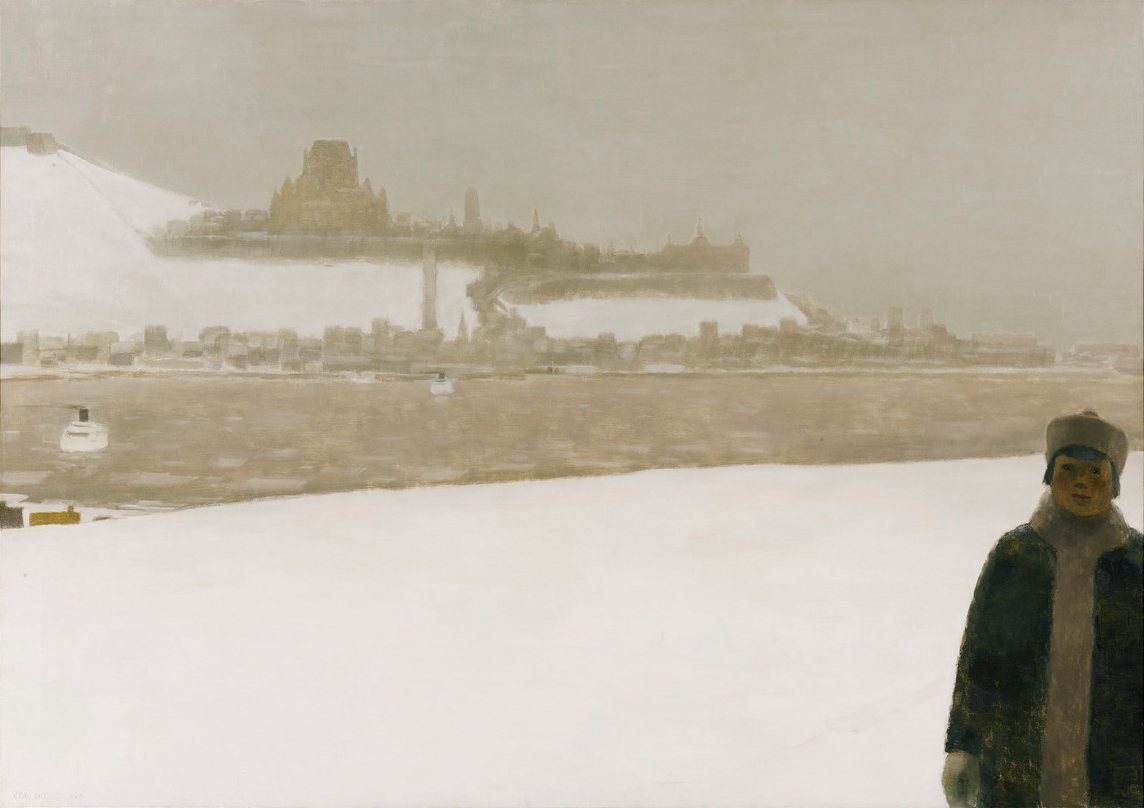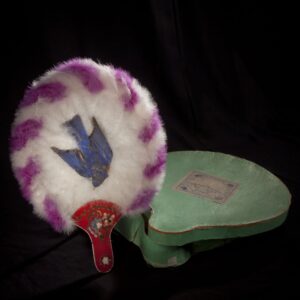Jean Paul Lemieux (1904–1990)

Jean Paul Lemieux, preparatory sketch for “Québec (projet de peinture murale)” (“Québec [Mural Project]”), 1949
Oil on millboard, 25.4 x 101.6 cm
The Royal Collection, United Kingdom
The painter Jean Paul Lemieux is inextricably linked to the art history of Quebec City, where he was born in 1904 and chose to live, teach, and practise his art, as well as establish himself as a critic. His bond with the capital was unwavering. In 1950, he submitted a mural project focused on the city to the fifth edition of the Concours artistiques de la province de Québec, an annual competition that emphasized painting, sculpture, and the decorative arts. The competition included an exhibition held at the Musée de la province (now the Musée national des beaux-arts du Québec). Lemieux’s submission, the preparatory sketch for “Québec (projet de peinture murale)” (“Québec [Mural Project]”), is a panoramic view of the city rendered in the primitivist and narrative style that characterized his work in the 1940s.

The composition unfolds horizontally, emphasizing the city’s unique geography, with the Lower Town bordered by the river and the Upper Town enclosed by ramparts. Meticulous details draw the observer’s eye into every corner of the image, revealing the vibrant life at the heart of a Quebec winter.
Lemieux was a staunch advocate of mural art, concerned with the democratization and accessibility of art. After the Second World War (1939–45), mural art also became a way to address the financial hardships artists faced. “Québec (projet de peinture murale)” did not win an award at the Concours artistiques, but it achieved a different type of honour in 1953, when the Régiment de la Chaudière presented it as a gift to Queen Elizabeth II to mark her coronation.
Born into a family of prosperous merchants, Lemieux grew up in Quebec City and spent his summers at the Kent House, an elegant hotel overlooking Montmorency Falls. It was there that he had his formative encounter with painting, through an American artist employed by the hotel. After many years living in California and Montreal, where he studied and began teaching, Lemieux returned to the city permanently in 1937. He took a position at the École des beaux-arts de Québec and taught painting there until 1965, and enjoyed a brilliant career as a painter until the end of his life.
The city is omnipresent in Lemieux’s work. In La Fête-Dieu à Québec (Corpus Christi, Quebec City), 1944, he vividly and humorously captures the two factions—church and military—that shaped its founding. Drawing on the compact spatial arrangements of Italian primitive art, Lemieux depicts the liturgical procession descending from the Upper Town toward the river on June 11, 1944. In the stark composition Janvier à Québec (January in Quebec City), 1965, by contrast, the city serves as the backdrop to human solitude, so poignantly evoked in the cold and whiteness of winter. Finally, in Québec brûle (Quebec City Is Burning), 1967, Lemieux once again uses the city’s silhouette, this time filling his canvas with the haunting visions that tormented him in the autumn of his life. Inspired by his admiration for the Nordic Expressionism of Edvard Munch (1863–1944), Québec brûle transforms the city into the backdrop for apocalyptic visions. Whether as a setting or a central theme, Quebec City pervades all of Lemieux’s artistic periods—from his early narrative and primitive works, through his Post-Impressionist-inspired classical phase, to the Expressionism of his later years. 1

 About the Author
About the Author
 More Online Art Books
More Online Art Books
 Acknowledgements
Acknowledgements